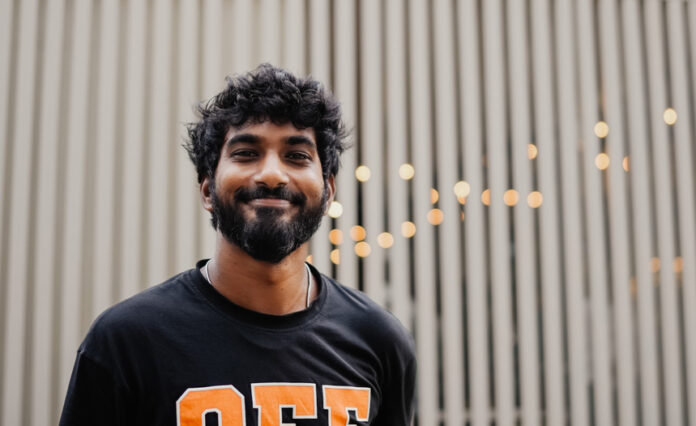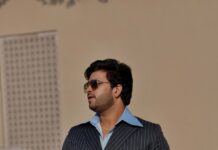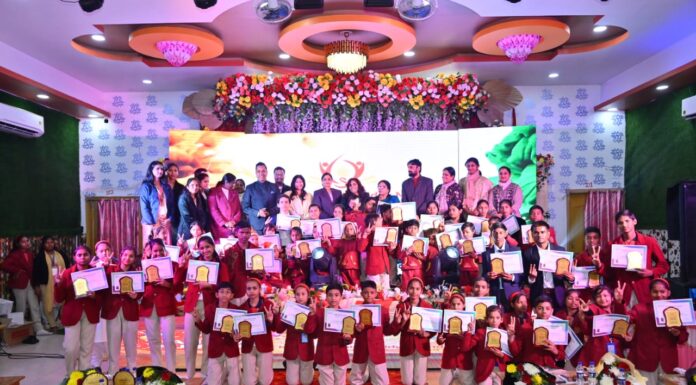How many years have you been in Cinematography?
I started my journey in cinematography 9 years ago, transitioning from street photography to motion picture. Over the years, I’ve worked across diverse formats, from feature films to high-impact brand campaigns, always striving to push visual storytelling to the next level. My work has been recognized on esteemed platforms like the NFDC Film Bazaar and the National Geographic-powered #nofilter IndiGo exhibition. I believe cinematography isn’t just about framing visuals—it’s about capturing emotions, narratives, and perspectives that leave a lasting impact. Every project is an opportunity to evolve, and I constantly challenge myself to refine my craft while collaborating with the best in the industry.
Can you walk us through the process of approaching a new project? How do you collaborate with the director to translate their vision to the screen?
When I approach a new project, the first step is always understanding the vision and intent behind it. Every director has a unique perspective, and my role is to align with that creatively. Our conversations revolve around the story’s tone, themes, and visual language—what emotions need to be evoked and how cinematography can enhance them.
Coming from a background where I built my network through my work rather than words, I let my visuals do the talking. As an introvert, making the first move was never my strength, but collaboration has always been at the heart of what I do. I work closely with the director to translate their vision through lighting, composition, and movement, ensuring that every frame resonates with the emotional core of the story.
On set, while preparation is key, adaptability is just as crucial. Things rarely go exactly as planned, and sometimes the best visuals emerge from spontaneous moments. Whether it’s rethinking a shot, adjusting lighting, or finding creative solutions on the fly, I see my role as not just executing a vision but also offering new possibilities. At the end of the day, cinematography is about storytelling, and my goal is always to create visuals that connect with the audience on a deeper level.
Tell us about a challenging shot or scene you’ve worked on. What were the obstacles, and how did you overcome them?
One of the most challenging shots I’ve worked on was during a feature film shoot in Giridih, Jharkhand. We were designing a murder scene in an open cricket stadium, and the director was very clear—he wanted it to be captured in a single take.
I had mounted the camera on a gimbal, but the lighting setup was tricky. There was a single top light in the stadium that I couldn’t switch off, making it the primary source. Additionally, there were practical lights scattered around that I had to consider while moving to avoid unwanted shadows. The biggest challenge? I had no assistants or gaffer, just one attendant and other crew members helping with coordination.
Despite the constraints, I meticulously planned every movement, ensuring the composition, lighting, and continuity stayed intact throughout the long one-take shot. The final take was minutes long, executed exactly as envisioned, and approved by the director without the need for a second attempt.
It was physically demanding and required intense focus, but the satisfaction of pulling it off in a single take made it all worth it. Challenges like these push me to think on my feet and trust my instincts as a cinematographer
How do you balance technical considerations with the artistic side of cinematography?
For me, the technical side of cinematography is an ongoing learning process—new tools and techniques are constantly evolving. But at its core, cinematography is an art form. I see the artistic side as the soul of an image and the technical aspects as the body that brings it to life.
To maintain this balance, I ensure that technical choices always serve the artistic intent. Whether it’s selecting the right lens to enhance emotion, controlling lighting to shape mood, or using movement to immerse the audience, every decision is driven by storytelling.
When I’m not actively shooting, I dedicate time to improving my technical skills—visiting senior cinematographers’ sets, experimenting with indie artists, and testing new techniques in personal projects. These explorations help me refine my craft so that when I’m on a commercial set, I can instinctively merge both aspects without compromising either.
What are your favourite films or directors that have influenced your work as a cinematographer, and how have they shaped your style?
Wong Kar-wai’s collaboration with Christopher Doyle in In the Mood for Love taught me the power of color, mood, and poetic camera movements, influencing how I create atmosphere and emotion. Wes Anderson’s meticulous framing and production design shaped my understanding of space and composition, while Terrence Malick’s use of natural light and fluid camerawork in Voyage of Time deepened my appreciation for instinctive cinematography.
Their influences blend into my style—merging naturalism with artistic expression, using available light, unconventional framing, and movement to craft emotionally engaging visuals. But I constantly evolve, drawing inspiration from new films, experiences, and the world around me
Can you describe your experience working with Kissht?
Working with Kissht was a fantastic experience, especially because the creative and marketing team trusted us to bring our vision to life. The seamless collaboration allowed us to experiment with bold visual storytelling while maintaining a sharp focus on brand communication.
One of the highlights was crafting the Superwoman entry scene, where we played with dynamic camera movements and sound design to create a high-energy, engaging moment. That level of creative freedom elevated the project and reinforced how trust between the creative and technical teams leads to great results.
It was truly refreshing to work with a team that values experimentation, and I look forward to pushing more creative boundaries with them in the future
You can watch the ad films here:
https://www.youtube.com/@Kissht/videos
Hemant Ram is a passionate cinematographer with experience across a diverse range of projects, including documentaries, short films, music videos, and digital ad films across categories. He is also a founding member of Lightsrollin’, a production house specialising in evocative films across media. Hemant has shot and co-produced a documentary that was added to the NFDC 2023 Film Bazaar catalogue. One of his street photographs was also exhibited in the National Geographic-powered #nofilter IndiGo exhibition, showcasing his artistic versatility beyond cinematography. He is particularly skilled in street photography and capturing human emotions, bringing authenticity and depth to his visuals.
With experience across 250+ creative projects, Hemant has collaborated with renowned brands such as Amazon Mini, ICICI, Maersk, Universal Music, Disney Hotstar, Color Yellow, Netflix, Kissht, and BBC. Last year, he shot a feature film that is scheduled to be released this year, marking a significant milestone in his career.
Hemant was also awarded Best Cinematography at the 11th International Documentary Noida Film Festival, further solidifying his expertise and recognition in the field.
Hemant leads his projects with dedication and creativity to align with his client’s strategic and business goals. He collaborates with prolific DPs to expand his expertise while remaining a student of his craft.





















